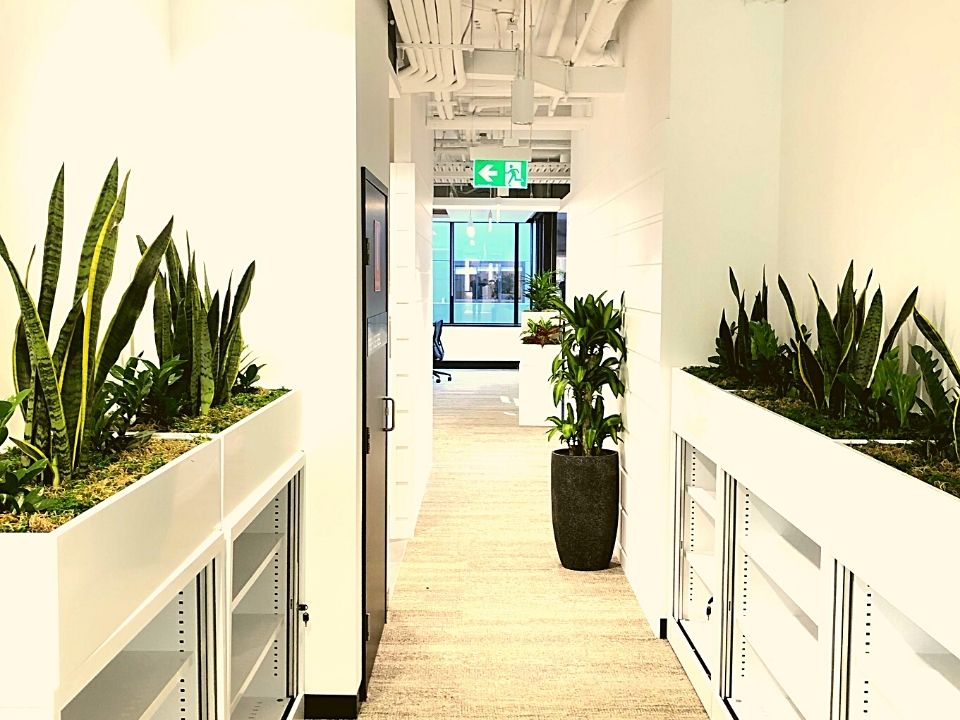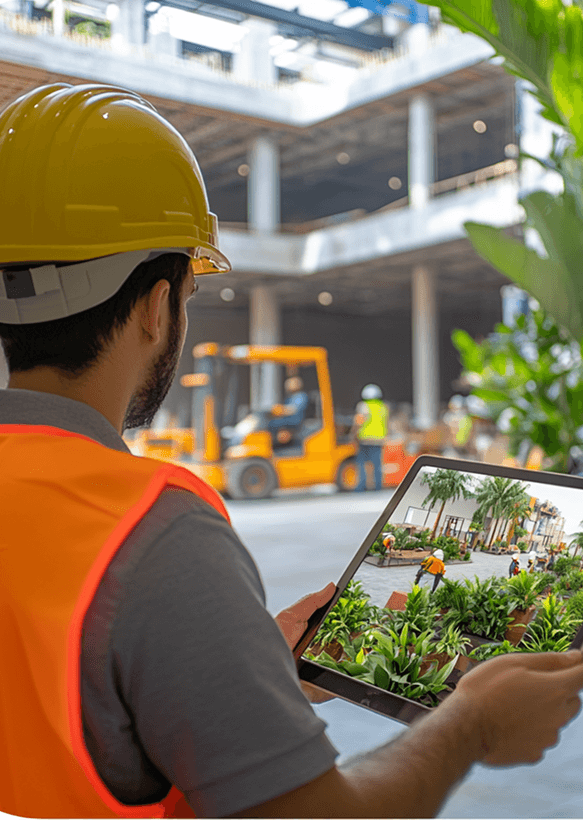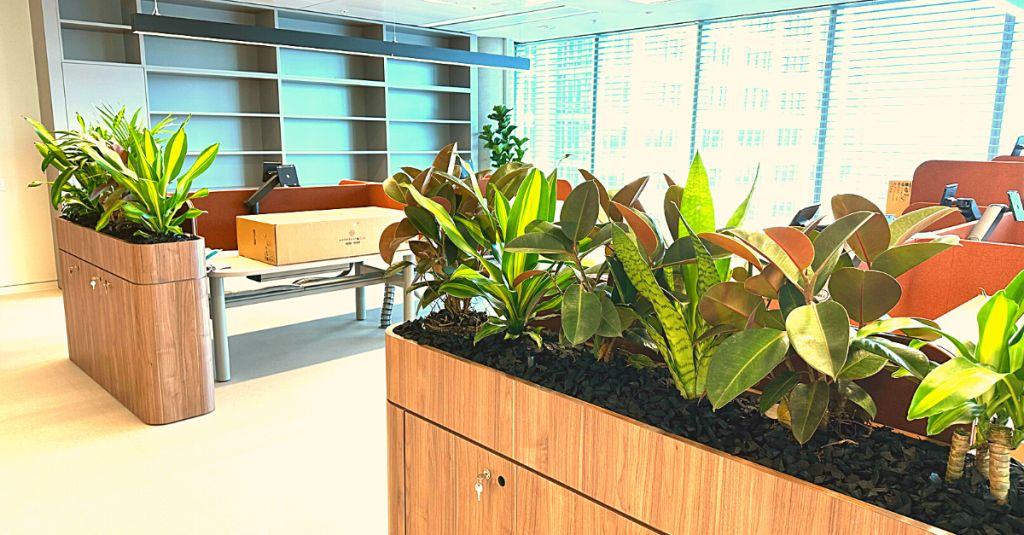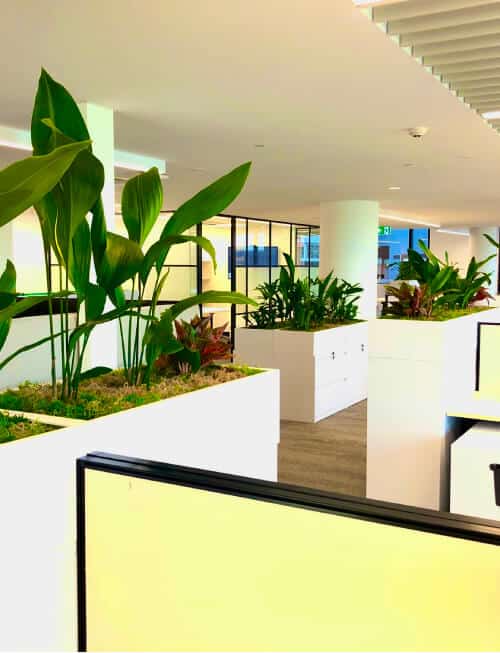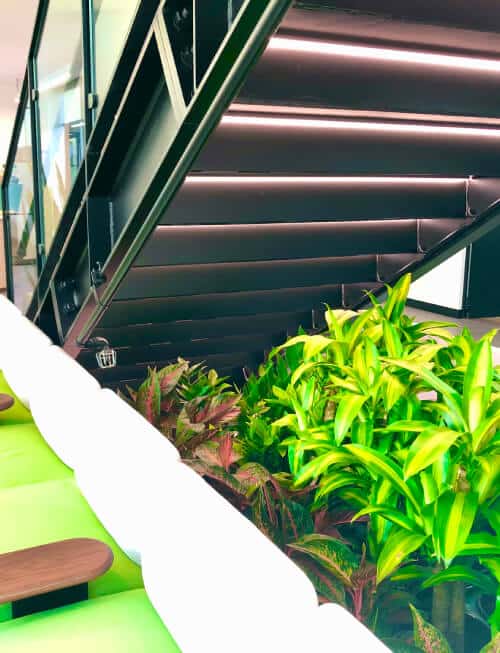How to use plants more effectively in design to enhance spaces
Transforming Spaces with Planting
Optimising Spaces with Strategic Plant Placement
Accentuating Focus with Plants
Guiding Traffic with Plants
Line of Sight
Transforming Spaces with Planting
Plants are not just decorative elements; they are dynamic tools for reshaping and redefining spaces. Their ability to create movable visual and sound barriers is unparalleled.
Consider an open-plan cafeteria in an office, where the arrangement of seats offers little privacy, making every conversation feel like a public affair. Introduce 4-5 wheeled troughs, strategically positioned perpendicular to the walls or windows, and interspersed with seating. This simple addition transforms the area into a series of private booths, allowing people to enjoy a break and engage in private conversations, detached from their workstations and the prying eyes of others.
In the same cafeteria, imagine a boisterous birthday celebration for a large department. By aligning the troughs in a row and rearranging the tables behind them, you effectively create a partition that provides a sense of comfort and privacy for other diners in the area, while also mitigating noise levels.
In open-plan offices, plants can be used to carve out secluded breakout areas. These green havens are perfect for team collaborations or small group discussions, ensuring productivity without disrupting the rest of the workspace.
Consider the typical meeting rooms – often stark and uninspiring. Why not transform one of them into a ‘green room’? Surround its perimeter with plants of varying heights, growth patterns, colours, and shapes. This not only enhances the aesthetic appeal but also creates a refreshing and stimulating environment. It’s likely that this ‘green room’ will become the most preferred meeting spot, proving the power of plants in creating inviting and functional spaces.

Optimising Spaces with Strategic Plant Placement
Have you noticed in certain spaces, despite an abundance of seating, the same few seats are always occupied while others remain perennially unused? This pattern often stems from a basic human instinct for safety – the preference to sit where our backs are protected, especially from doorways or areas where others might overlook us.
This instinct also plays a role in our comfort during phone conversations. No one likes the idea of every word being overheard by coworkers. Here, plants can serve as an effective sound barrier, offering a degree of privacy in open spaces. Additionally, in areas plagued with intense echoes, plants can be incredibly useful in absorbing and deflecting sound waves, thereby reducing echo.
By placing plants strategically around seating areas, we can enhance the sense of safety and privacy. This subtle arrangement can make people feel more secure, as if their backs are shielded from the rest of the room.
Moreover, with just 5-6 plants thoughtfully placed within a room, you can significantly increase its occupancy and appeal. This approach not only maximizes the usage of available space but also adds value to every square meter of your property. It’s a simple yet effective way to make your spaces more inviting and efficient.
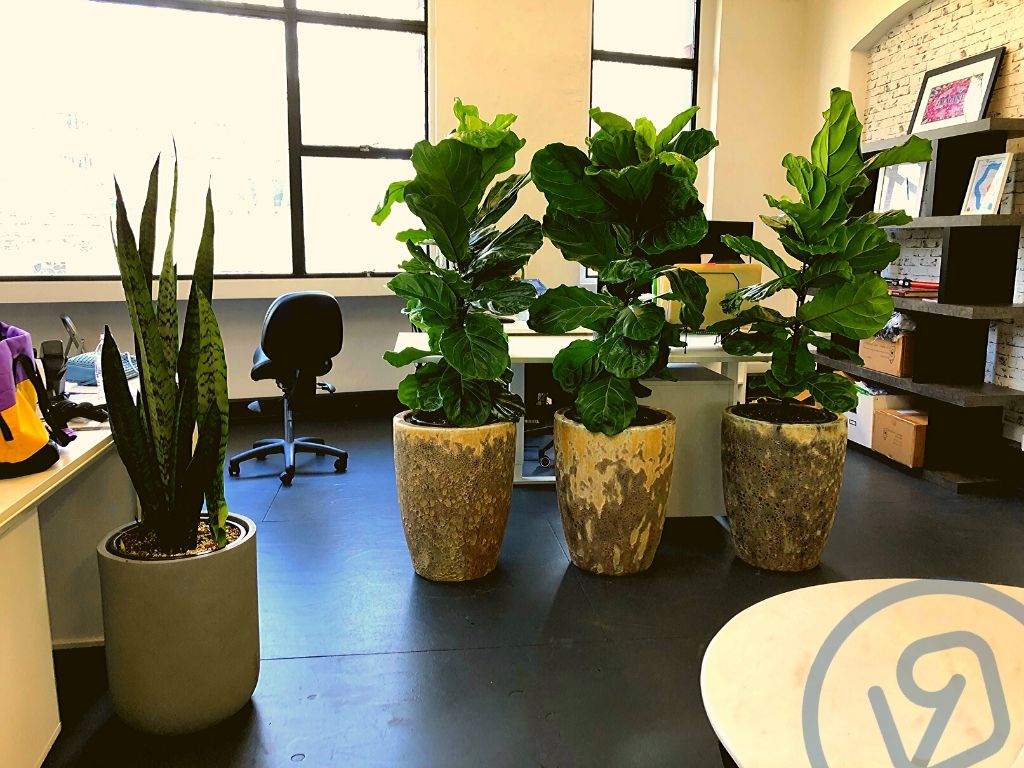
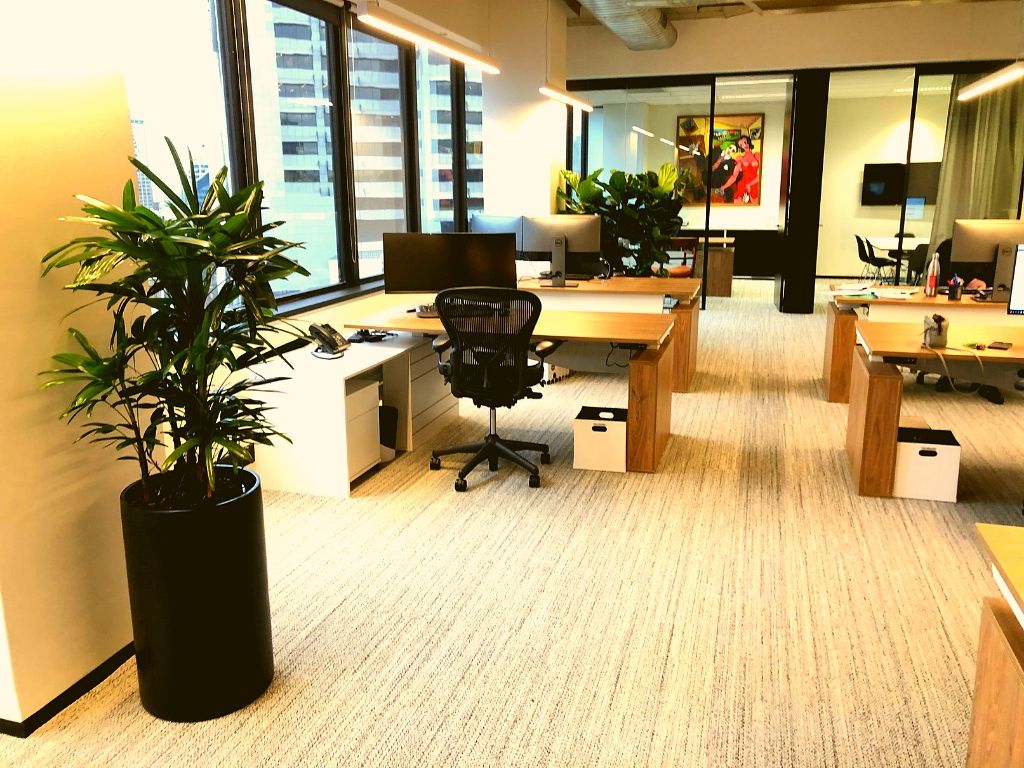
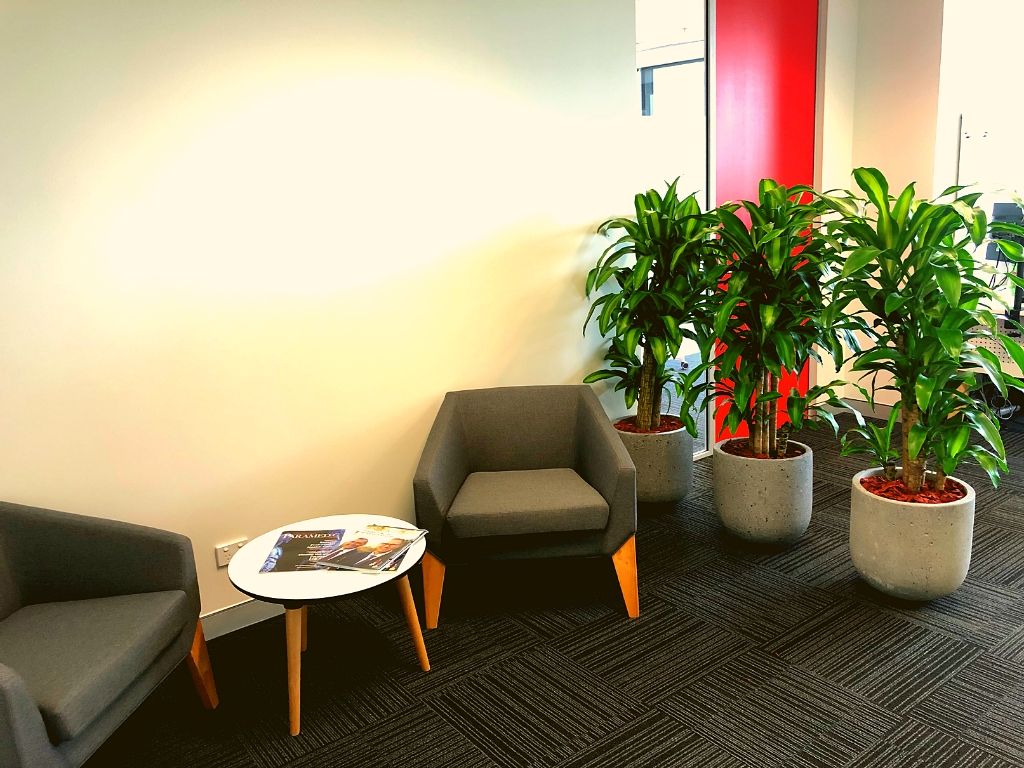
Accentuating Focus with Plants
Instead of merely using plants to obscure or hide less appealing areas, they can be strategically employed to redirect focus and enhance the overall aesthetic of a space. For instance, placing a single plant at the end of a row of desks, particularly where the under-desk area is exposed, can subtly draw the eye upwards. This redirection helps to divert attention from the less appealing sight of people’s legs and jumbled cords beneath the tables.
Often, plants are relegated to fill the void in ‘dead spaces’ – those forgotten corners or awkward gaps between desks. While adding a plant to these spots might distract the eye, it can be somewhat lacklustre in terms of design. A more impactful approach is to gather 6-7 plants and arrange them in a cluster within these areas. By varying the heights, shapes, colours, and textures of both pots and plants, you transform a mundane corner into a compelling feature of the room. This method not only draws attention away from the less utilised spaces but also adds a dynamic and vibrant element to the overall environment.
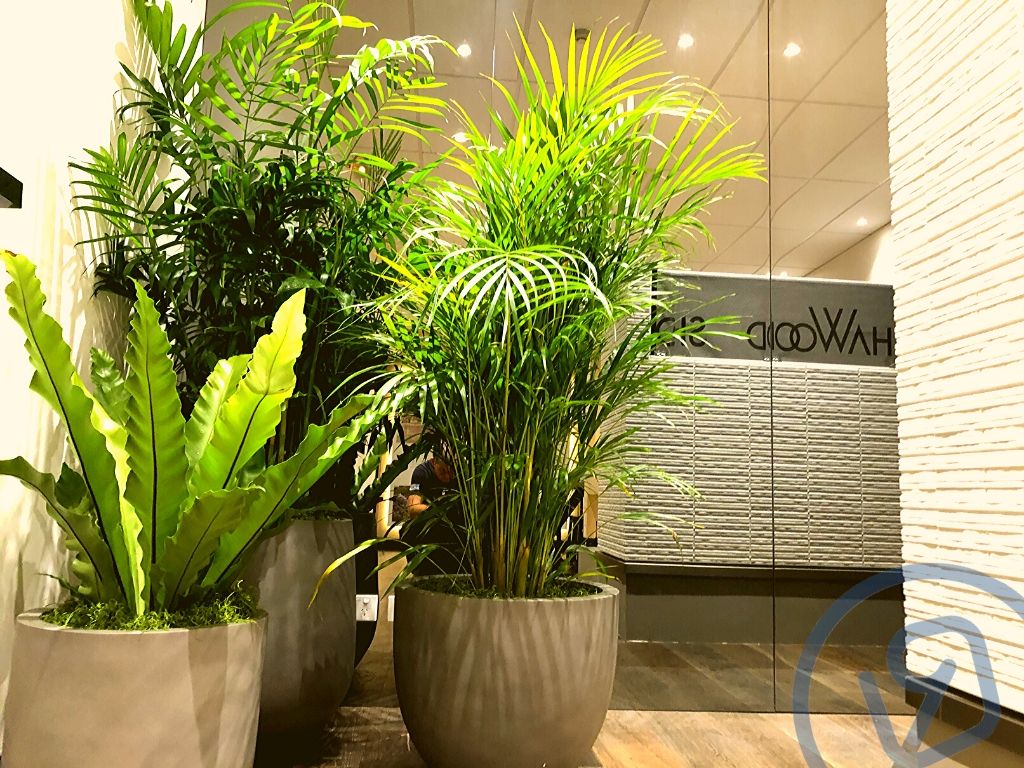
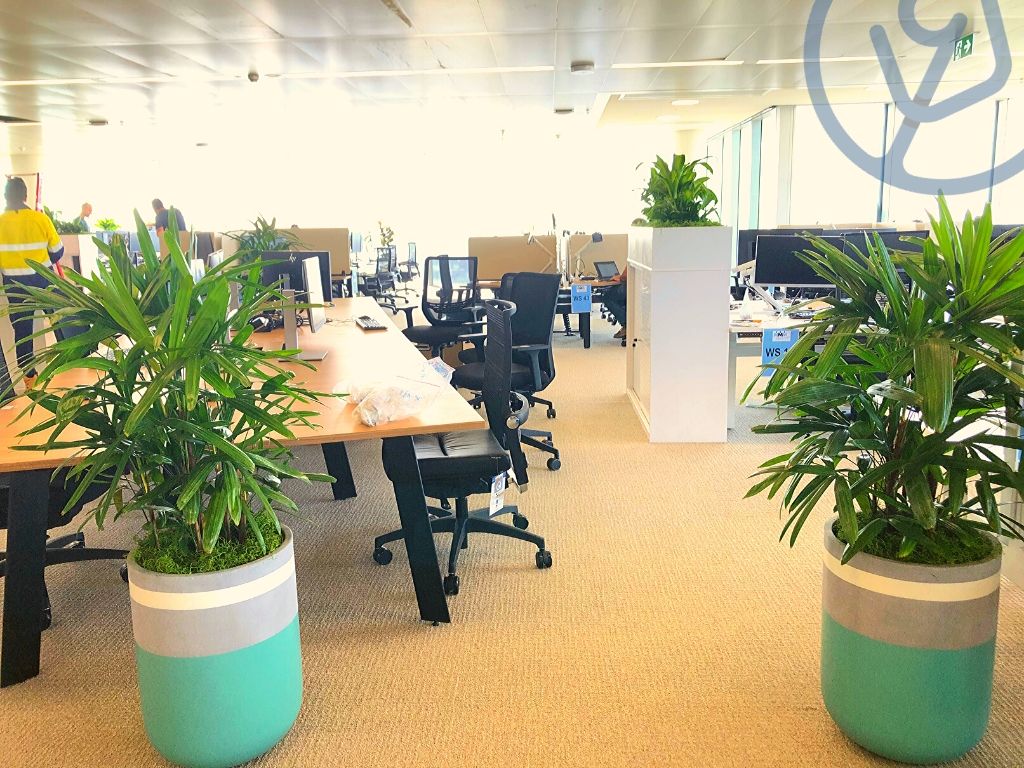
Guiding Traffic with Plants
Utilising plants as natural barriers and guides, we can subtly influence the flow of traffic in any space. By positioning one or two plants at the end of a short hallway leading into an open-plan area, we create a natural pause point. This encourages newcomers to stop and orient themselves before proceeding.
Exiting an elevator? A clever placement of one or two plants on the opposite side of the desired direction can intuitively guide people towards the intended path, streamlining movement without the need for signage.
In reception areas, plants play a pivotal role. Placed strategically on the floor or atop the reception desk, they can direct visitors efficiently towards the receptionist while discreetly shielding sensitive areas, such as screens or paperwork, from view.
Our approach also involves using plants to subtly deter access to certain areas. Positioning a plant in a way that requires a slight detour or manoeuvre can effectively discourage passage, guiding people away from restricted zones.
Imagine the retractable barriers in airports that guide travellers. We replicate this effect with mobile troughs filled with plants. For large office gatherings, these movable plant arrangements can effortlessly direct guests to meeting rooms or specified areas, eliminating the need for explicit direction and keeping private spaces undisturbed.

Line of Sight
In our design process, we focus keenly on the line of sight – what people observe as they enter and navigate a space. This involves considering ‘flight paths’ from various perspectives, including those of clients and staff.
For clients, we meticulously plan their visual journey towards boardrooms or meeting areas. By strategically positioning plants at corridor ends, we create an illusion of abundant greenery, enhancing their spatial experience. Privacy is also a paramount consideration; we ensure that plant placements shield sensitive staff areas from view, such as workstations, dining spaces, and entrances to private areas like restrooms.
Regarding staff, we transform everyday office areas into engaging environments. Long corridors, often perceived as dull, are revitalised with plants, creating a visually stimulating journey. Feature plants at corridor ends add interest and depth. We’re mindful of creating discrete spaces; using plants for modesty screening under desks and ensuring the dining area remains a secluded retreat, away from desks and high-traffic zones. Desk privacy is also a priority, ensuring screens are shielded from casual observation and minimising any feeling of being overlooked or interrupted.
In open-plan offices, our goal is to infuse the space with vitality and a sense of nature. We achieve this by introducing ‘pops’ of green throughout – over desks, in break-out areas, and in communal spaces – crafting an atmosphere that is both vibrant and lush.

